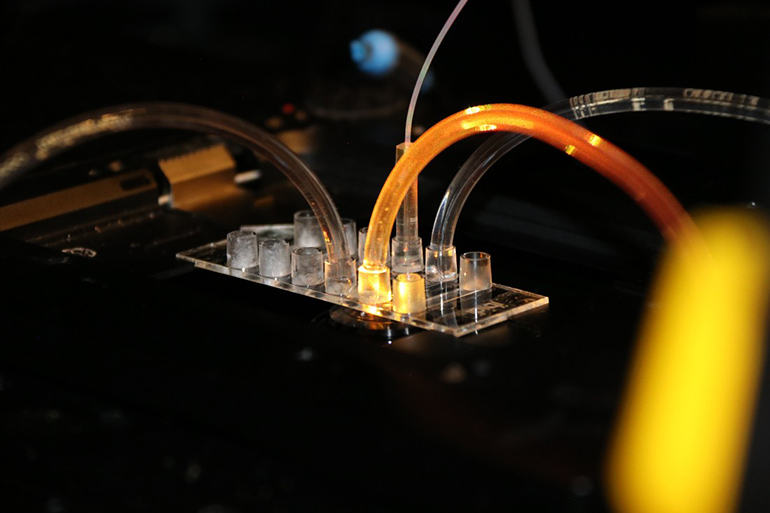Researchers at the University of Copenhagen have developed a technique that lets them screen the interactions of drug candidates with target molecules extremely rapidly, inexpensively, and with very small amounts of starting materials and reagents. The highly efficient method, which the researchers have called “single particle combinatorial lipidic nanocontainer fusion based on DNA mediated fusion (SPARCLD),” involves combining small amounts of the molecules within liposomes. The technology could simplify drug discovery and vaccine development, and help us to turbocharge our response to future public health emergencies, such as another viral pandemic.
Screening vast libraries of thousands of compounds to find the magic drug candidate is all in a day’s work for pharmaceutical companies. However, the resources, time, and effort that go into such endeavors can be enormous. The researchers behind this new technology make the mind-boggling claim that they can speed this process up by a factor of 1 million, and the secret lies in conducting these experiments on the nanoscale.
“The volumes are so small that the use of material can be compared to using one liter of water and one kilogram of material instead of the entire volumes of water in all oceans to test material corresponding to the entire mass of Mount Everest,” said Nikos Hatzakis, a researcher involved in the study. “This is an unprecedented save in effort, material, manpower, and energy.”

The technique involves using liposomes to hold and combine molecules. This all happens on a tiny scale, with the researchers reporting that up to 40,000 molecules can be analyzed in an area that is comparable to the head of a pin. The obvious advantages include a drastic reduction in the amount of reagents and the molecules themselves, making the whole procedure much less expensive than conventional drug discovery techniques.
“We had to keep things hush-hush since we didn’t want to risk for others to publish something similar before us. Thus, we could not engage in conversations with industry or with other researchers that may use the method in various applications,” said Hatzakis. “A safe bet would be that both industry and academic groups involved in the synthesis of long molecules such as polymers could be among the first to adopt the method. The same goes for ligands of relevance for pharmaceutical development.”
“A particular beauty of the method that it can be integrated further, allowing for direct addition of a relevant application,” he added. “Our setup allows for integrating SPARCLD with post-combinatorial readout for combinations of protein-ligand reactions such as those relevant for use in CRISPR. Only, we have not been able to address this yet, since we wanted to publish our methodology first.”
Study in Nature Chemistry: Single-particle combinatorial multiplexed liposome fusion mediated by DNA
